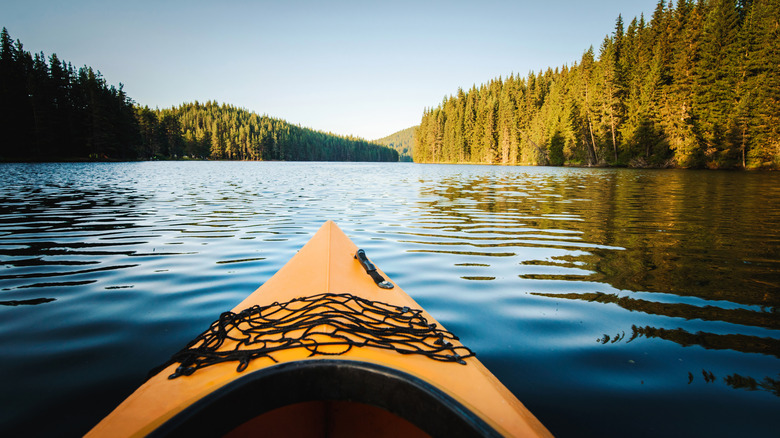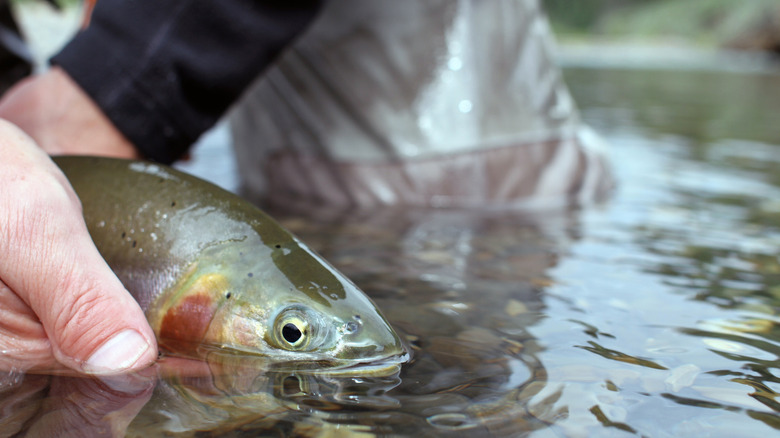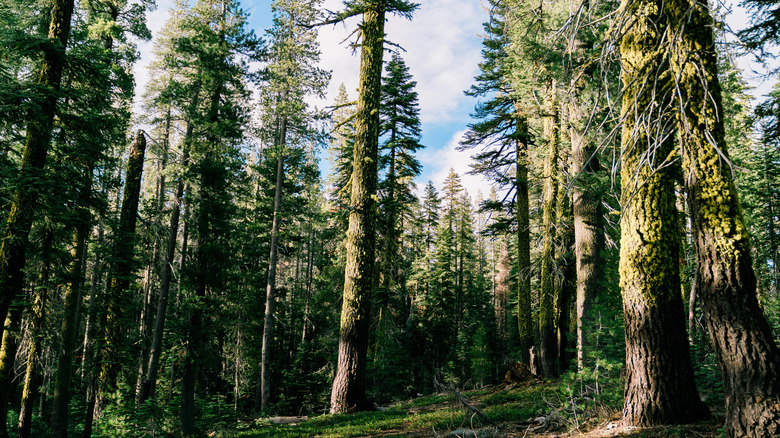Kayak Or Float Down This Stunning California Alpine Lake For Free Surrounded By Scenic Forest Views
Lie back, close your eyes, and let the cool water buoy you as you turn your face up to the sun, listening to the sound of paddles lapping nearby and an occasional boat motor or thrum of crickets in the forested thickets on shore. Perhaps you have a cold drink in your hand. Maybe you're basking on an inner tube. This is the perfect afternoon, and this is Independence Lake on the Independence Lake Preserve in California's Northern Sierras.
Home to plentiful biodiversity (not to mention it's one of only two natural habitats for the threatened Lahontan Cutthroat trout), Independence Lake is an immaculate glacial lake born from melting glacial water that feeds Upper Independence Creek; situated at about 7,000 feet elevation and plummeting 145 feet deep at its lowest, the views and atmosphere are unbeatable. To the east, the lake flows out into Independence Creek, a tributary of the Little Truckee River.
The preserve is so committed to maintaining natural ecosystems that it prohibits outside watercraft to mitigate risk of invasive species; you can't even bring your own paddleboard. However, the Nature Conservancy maintains its own boat fleet for free public use. Starting each Memorial Day on Independence Lake, if you have a California boater card you can borrow a motorboat – or, if you don't have a boater card, you can utilize the preserve's free tubes and kayaks. Check the boating calendar and get there early, as, unsurprisingly, the boats get claimed quickly. Only 35 miles through the mountains from Tahoe City, a great place to start your perfect road trip itinerary around Lake Tahoe, and just 50 miles from Reno, "the biggest little city in the world" and a walkable hub of food, art, and of course, gambling, Independence Lake is a destination for adventure-seekers, summer vacationers, hikers, boaters, naturalists, and even winter sports enthusiasts.
You can fish for a threatened species of trout on Independence Lake
The Nature Conservancy, which maintains the lake and local area, calls Independence Lake "One of the most pristine alpine lakes west of the Rockies," and the Truckee-Donner Historical Society calls it "the Jewel of the Sierra." While not the largest lake in the area by any means, Independence Lake is certainly one of the most well-preserved. Water preservation is important not just to protect native ecosystems, but also because the Truckee River watershed provides clean water reserves for northern Nevada and the Tahoe area. Settlers first built a dam on the lake in 1879, which was replaced in the 1940s after a forest fire. For 60 years, the area was maintained by power companies and closed to the public until the Nature Conservancy, in partnership with other conservation groups, acquired much of the area in 2010.
The lake has long been home to the Washoe Indigenous people who sustainably made use of the bountiful natural resources, including native Lahontan Cutthroat trout. When European settlers arrived in the early to mid-1800s, they named the lake Independence, and contributed to resource depletion, leading to the Cutthroat trout's classification as an endangered species under the 1969 Endangered Species Protection Act. In 1975 the trout was "upgraded" to a "threatened" classification, and today you are allowed to recreationally fish them in Independence Lake on a catch-and-release basis only, from Memorial Day through September 30.
If you plan to fish on Independence Lake, pack your vacation fishing gear, as the area is fairly remote and you won't be able to quickly rent or buy anything. You must use artificial bait, as live or natural bait is prohibited. Other wild fish you'll encounter at Independence Lake include brown trout, brook trout, and Kokanee salmon.
Wildlife-viewing, hiking, and camping are off-grid activities perfect for a visit to Independence Lake
Independence Lake is rife with wildlife, including black bears, mountain lions, and beavers. Bald eagles, osprey, and other birds inhabit the area, including rare species like willow flycatchers. Prior to the 1920s, wolverines roamed the woods, but haven't been seen for decades — that is, until one was spotted around Truckee and Lake Independence in 2008. Since then, the California Department of Fish and Wildlife has continued to monitor occasional sightings of this incredibly rare species.
Independence Lake is fairly remote; you'll likely lose cell service in the area, which makes it the perfect place to unplug. Situated in Sierra County, the nearest larger town is Truckee, about 20 miles south. Most visitors fly into the Reno-Tahoe airport, and the lake's about 125 miles from Sacramento. The roads into the Independence Lake preserve are technically open all year but can be impassable in winter months from snow, and the Nature Conservancy staff who work at the preserve are only on location from May through October.
There is plentiful camping and hiking in the area during the outdoor season, one highlight being a 3-mile trail around the lake covered in wildflowers and fauna. Mount Lola is the tallest local peak at over 9,000 feet. You can hike up and around through meadows and streams with spectacular views. While you can't camp in the preserve directly, you can camp at private Sagehen Creek Campground about 5 miles away or the state Upper Little Truckee campground, which is 10 miles away. In winter, skiers and snowboarders flock to Truckee and North Lake Tahoe Ski Resorts or to Donner Lake, an uncrowded, recreational alpine paradise north of Tahoe, which is not far from Independence Lake.


